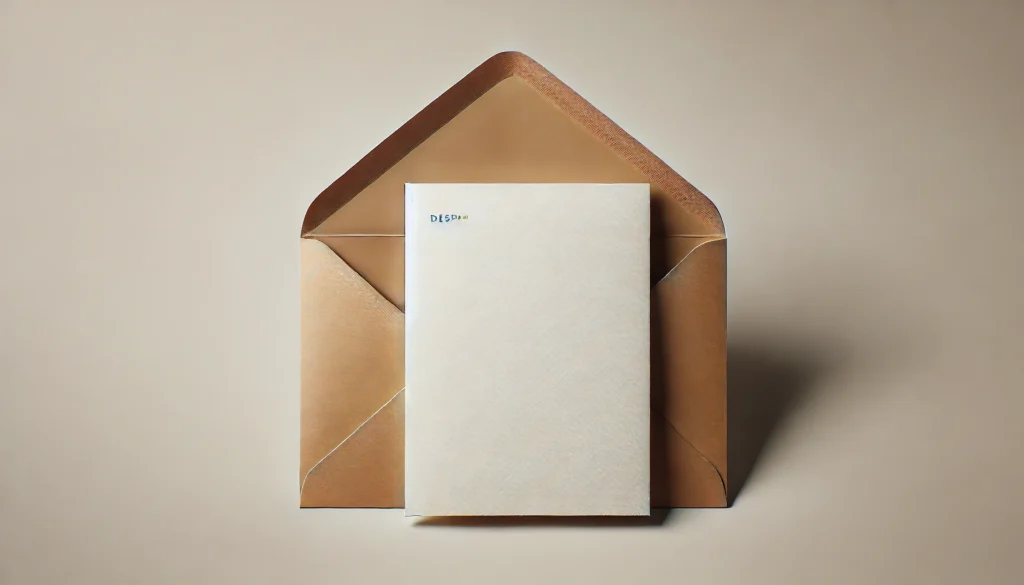Whether you’re a small business owner or a busy office manager, envelopes are an essential part of your organization. Choosing the right size business envelope can be a game-changer in terms of organizing, shipping, and branding. The right envelope makes a powerful first impression and reflects your brand’s professionalism. But with a sea of sizes and styles, which one should you choose? Keep reading, and we’ll guide you through.
Understanding the Importance of Business Envelope Sizes

In today’s fast-paced business environment, little details can significantly influence your professional image, and your business envelopes are one of them. These are not just packets for holding documents but tools for portraying a professional image.
Business correspondence is typically carried out in some form of envelopes. This signals to the recipient that the content is professional, whether it’s a bill, a sales catalog, or a thank you letter.
Choosing an inappropriate envelope size can create an unprofessional image in the eyes of your clients or partners. For instance, a small card nestled in a large packet might come off as clumsy and unorganized.
Thus, understanding the varied business envelope sizes and their uses can vastly impact your professional interaction. It will not only improve your company’s branding but also help streamline your business practices.
Familiarizing Yourself with Standard Business Envelope Sizes
The world of business envelopes is filled with endless options and can often lead to confusion. The starting point to simplifying this is to learn about standard business envelope sizes.
The US standard sizes are identified by a number or a name like #9, #10, “Monarch,” or “Commercial.” The #10 envelope is the most widely used for business correspondence. Its size (4 1/8″ x 9 1/2″) is perfect for tucking in a standard letter paper folded into thirds.
For sending documents that shouldn’t be folded, like certificates or photos, a catalog or a book-style envelope is appropriate. These can range from 6″ x 9″ and go up to 10″ x 13″.
Knowing these standard sizes can assist you in picking accurately for your business needs and help in maintaining professional standards.
Deciding on the Best Business Envelope Size for Your Needs
Now, armed with the knowledge of different envelope sizes, the next step is to decide the best fit for your business. This decision largely depends on what you intend to mail.
If you’re sending billing statements, invoices, or letters, the #10 envelope is your best bet. But if you’re into marketing or direct mail, you might want to explore other sizes to stand out.
No matter the industry, every business requires sending out sensitive documents now and then. For such instances, considering security envelopes with lined interiors protects the integrity and confidentiality of the information inside.
Remember, the best business envelope size for you largely factors in the content, the context, and the impression you want to make on the recipient.
Tips to Effectively Choose Envelope Sizes for Different Business Scenarios

Every business scenario requires different considerations when selecting an envelope size. These scenarios might vary from billing to marketing to official consignments.
For regular communication of letters, the #10 is ideal for its professionalism, and readability. However, if you wish to garner attention amidst a pile of standard sizes, you could consider opting for a square or a policy size.
When using envelopes to market your business, remember, the envelope is the first indication of the content inside. Give considerable thought to this first impression. An announcement-style envelope, for instance, suggests an invitation or good news and may get noticed instantly.
Always be aware of your recipients’ needs alongside your business scenarios. For example, a windowed envelope is best suited for bills or statements as it eliminates the need for addressing manually.
Overall, choosing an appropriate business envelope size isn’t challenging if your business needs and your client’s requirements are understood. Familiarizing yourself with standard options and thinking creatively about customization can effectively elevate the correspondence and the image of your company.

